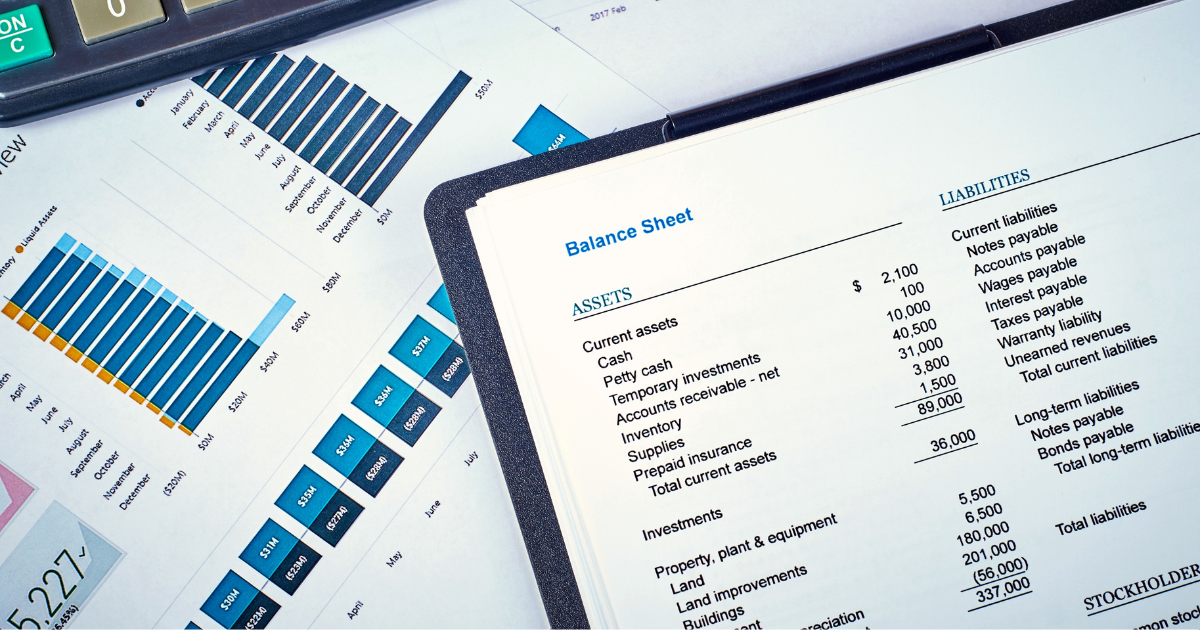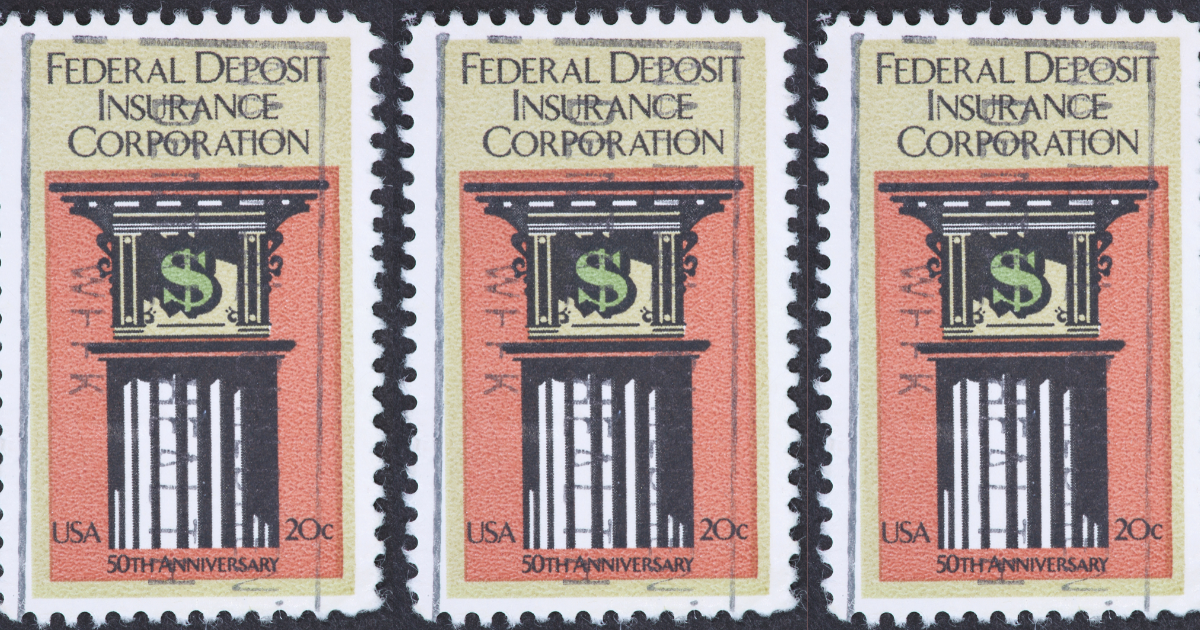Arc Learning Center
In-depth articles and insights around startup funding, banking and growth from the Arc Team.

Open a DACA Account with Arc
For non-bank lenders, managing risk within their portfolio companies is crucial. Deposit Account Control Agreements (DACAs) have traditionally been a key tool in this process. However, setting up DACAs with traditional banks can be slow, costly, and often inadequate. Arc is changing this landscape by streamlining the DACA process and providing real-time risk management tools, giving both lenders and borrowers greater control and efficiency.

Arc Team
Go-To-Market

Arc as a fintech platform for VC-backed startups 2025
Arc is an intelligent cash management and capital markets platform built for technology startups. We combine your business account, treasury, AR/APs, corporate cards, capital solutions, and an AI-powered CFO analyst within a single, unified interface.

Arc Team
Go-To-Market

Fintech Platform for Venture Backed Companies Compared
Evaluate the different Fintech platforms - built for speed, automation, and founder-centric convenience - are often early-stage founders' preference for a variety of reasons. Arc, Brex, Rho, and Mercury are some of the most prominent names, each offering unique advantages and limitations

Arc Team
Go-To-Market

Evaluating Financial Platforms for VC Startups
Evaluate the different Fintech platforms - built for speed, automation, and founder-centric convenience - are often early-stage founders' preference for a variety of reasons. Arc, Brex, Rho, and Mercury are some of the most prominent names, each offering unique advantages and limitations

Arc Team
Go-To-Market

The Founder’s Guide to Finance: “Bad Boy” Guarantees
“Bad Boy Guarantee”, “Bad Boy Guaranty” and “Bad Boy Guarantor”… If you've tried raising debt recently, you likely came across this term and had no idea what it was. To be honest, from a finance perspective when we first saw a term sheet with this clause in it, we too were a bit taken aback. But no need to worry, as it's pretty straightforward and doesn’t apply in most cases. We outline what it is, in what scenarios it applies, and what happens if it's triggered in this guide!

Arc Team
Go-To-Market

The Founder’s Guide to Finance: 20+ Metrics to Track in 2024
As a founder, you could track virtually a million metrics to determine whether your startup’s performance is positive, but as with most things in life, 80% of the results come from just 20% of the inputs. To help we've broken through the noise and outlined the twenty or so metrics you’ll want to track to ensure you’re heading in the right direction. The best part? We’ve bundled them into categories so you can address them with each of your functional leaders!

Arc Team
Go-To-Market

The Founder’s Guide to Finance: A Deep Dive on Gross Margin
Gross margin is a cornerstone metric in finance, providing crucial insights into a startup’s operational efficiency and profitability. Essentially, Gross Margin represents the percentage of revenue that exceeds the cost of goods sold (COGS). In this guide, we explore what it is, how its used, what a “good” gross margin is, and more.

Arc Team
Go-To-Market

The Founder’s Guide to Finance: Statement of Retained Earnings
The statement of retained earnings is one of the core financial documents regularly prepared by startups. In this guide, we break down what it is, what it’s used for, what its components are, and more.

Arc Team
Go-To-Market

The Founders’ Guide to Incorporating in Delaware in 2024
Delaware has long been favored for the incorporation of startups over the past few decades. It offers a business-friendly legal system, tax benefits, and established corporate precedence. However, it also comes with an elevated risk of double taxation, and potential non-compliance with local regulations. In this guide, we explore the benefits and drawbacks of incorporating in Delaware, how the incorporation works, what it costs, and more.

Arc Team
Go-To-Market

Raising Debt? Here Are The Docs Needed For Your Data Room
As you progress through the debt-raising process, you’ll inevitably have to assemble a comprehensive data room. Lenders use this information, along with other insights gathered throughout the due diligence process to make a “go” or “no-go” decision. Ensuring that your data room is well-curated with all the necessary documents not only instills confidence in your potential lending partners but can also streamline the end-to-end experience. In this guide, we break down each of the common forms of debt financing and the subsequent documents you’ll be expected to produce.

Arc Team
Go-To-Market

The Scoop: Not All Capital Marketplaces Are Created Equal
Capital marketplaces have quickly taken over the conversation in Finance teams across the board in recent times. They promise to streamline the process and bring competitive terms with minimal effort, but do they deliver? That depends. Borrowers (startups) want access to a narrowed selection of lenders based on their unique needs and financial profile and lenders want access to pre-qualified deal flow that matches their credit box. In this guide, we break down why not all capital marketplaces are created equal and how you can determine who to work with and who not to.

Arc Team
Go-To-Market

A Founder’s Guide To Preparing For Interest Cuts In 2024
To prepare for the impending interest rate cuts, reevaluate your capital allocation strategy, get your finances in order, establish relationships with lenders, and review your Cap-Ex plans for the new year. Once rates have come down, raise additional debt capital or refinance any existing high-cost debt, establish a US Treasury Bill ladder, and park the majority of your idle cash in longer-duration securities. In this guide, we break down each of these actions in more detail, and we explore the correlation between interest rates, the cost of capital, and the yield earned in a treasury account.

Arc Team
Go-To-Market

The Founder’s Guide to Outsourcing vs Hiring Capital Markets
There comes a time in every founder’s journey when it makes sense to outsource or hire a dedicated individual to own and run the capital markets function. Typically this juncture is reached when a startup needs to raise its first significant debt capital and the founder doesn’t have the necessary expertise or experience to run the process. . In this guide, we break down the capital markets function, exploring what the key responsibilities entail, what factors to consider when deciding to hire or outsource, and what “success” looks like.

Arc Team
Go-To-Market

Term loans vs. venture debt - is it all just marketing?
While term loans and venture debt are similar, there are some key differences. Venture debt is moreso suited for high-growth technology startups that have recently raised equity capital, whereas term loans are better suited for mature businesses that need fixed repayment schedules. Venture debt’s bullet structure makes it great for startups that want to invest in their growth but don’t want to be dragged down by monthly repayments, while term loans are great for equipment or new facility purchases. In this guide, we break down each form of financing, including the pros and cons, so you can make a more informed decision for your startup.

Arc Team
Go-To-Market

The Founder’s Guide to a Successful Recapitalization in 2024
Recapitalizations are often used to stabilize a startups operations, defend against a hostile takeover, or prevent bankruptcy. The ultimate goal is to improve the company's debt-to-equity ratio to reach its “optimal capital structure”. In this guide, we break down recapitalizations—exploring how they work, why startups use them, and how they’re typically structured.

Arc Team
Go-To-Market

The Founder’s Guide to Securities-Backed Lines of Credit
Securities-backed lines of credit (SBLOC) can be a great option for startups with significant reserves that are invested in US Treasury Bills or ETFs but do not want to liquidate their portfolio to access short-term funding. In this guide we break down SBLOCs—exploring the key features, terms, and use cases, and we answer the frequently asked questions, so you can determine if it’s right for your needs.

Arc Team
Go-To-Market

The Founder’s Guide to Leveraged Buyout Financing in 2024
Growth through acquisition is one of the most efficient paths for startups. Through leveraged buyout financing, startups can complete the funding for an acquisition within a few weeks. In this guide, we break down what leverage buyouts are, how they work, and their key characteristics. We also answer the frequently asked questions.

Arc Team
Go-To-Market

The Founder’s Guide to Raising Inventory Financing in 2024
Inventory financing is a great tool for retailers, merchants, and startups that are growing quickly, operate seasonally, or have recently signed a strategic partnership. In this guide, we break down this form of financing, examining the key benefits and drawbacks and addressing the commonly asked questions.

Arc Team
Go-To-Market

The Founder’s Guide to Acquiring Asset Financing in 2025
Asset financing can be a great option for startups looking to purchase tangible or intangible assets. This preservation of capital, along with the fixed repayment terms makes operating and financing leases attractive. In this guide, we break down asset financing, share how it works, the types that exist, the advantages and disadvantages, and answer the frequently asked questions. Let's dive in!

Arc Team
Go-To-Market

The Founder's Guide to Getting a Financing Lease in 2024
Financing leases are an attractive option for startups seeking machinery, equipment, vehicles, and other high-ticket items to operate their business. They have lower upfront costs and potential tax benefits and can help startups preserve their working capital. In this guide, we break down the basics of financing leases, and the pros and cons of this form of financing, and answer the commonly asked questions.

Arc Team
Go-To-Market

The Founder's Guide to Getting an Operating Lease in 2025
Operating leases are a great option for startups that need to use high-cost assets in their day-to-day operations, but do not have sufficient capital to purchase them, or do not want to make a large capital outlay upfront. Opting to rent such assets is a practical and cost-effective solution for the short to medium term until purchasing the underlying asset is feasible. In this guide, we cover the basic elements of an operating lease, including what they’re commonly used for and we break down the key factors to consider when deciding if this form of financing is a good fit.

Arc Team
Go-To-Market

The Founder's Guide to Raising a Warehouse Facility in 2024
A warehouse facility is a form of credit facility issued by a lender to a third party that intends to provide some percentage of the capital to a non-related party. Like a credit facility, the startup approved for the credit draws down the available balance as it issues credit to other parties. In this guide, we break down warehouse facilities and share tips from raising our own $150M credit facility.

Arc Team
Go-To-Market

The Startup Founder’s Guide to Raising a Term Loan in 2025
Given you’re reading this guide, we’re going to assume you’re either in the market for a term loan or trying to determine if a term loan is right for your startup. If that's the case, great you've come to the right place! In this guide, we break down the key factors to consider when evaluating a term loan.

Arc Team
Go-To-Market

The Startup Founder's Guide to Asset-Backed Loans in 2024
Asset-backed loans are a great fit for startups with significant assets, such as hardware startups, D2C startups with large amounts of inventory, biotech companies with machinery and equipment, or real estate startups with physical properties. They can also be a good fit for SaaS startups that have recurring revenues. In this guide, we break down ABL, and share all of the key factors to consider when deciding whether to pursue this funding option!

Arc Team
Go-To-Market

The Founder’s Guide to Structured Equity Financing in 2024
Structured equity financing combines multiple financing instruments—convertible notes, preferred stock, and SAFEs—to create tailored funding solutions for startups. Each of the financing “tools” serves a distinct and complimentary purpose, hence the demand for this structure. In this guide, we break down why startups pursue structured equity financing, the key advantages and disadvantages, and the things to consider when deciding whether this form of financing is right for your startup.

Arc Team
Go-To-Market

The Founder’s Guide to Raising Unitranche Debt in 2024
Unitranche debt simplifies the borrowing process for startups by consolidating senior and subordinated debt into a single facility. The simplified structure, streamlined negotiation processes, flexibility, and potential cost savings make it an attractive option for startups pursuing a leveraged buyout transaction, such as an acquisition. In this guide, we break down all of the key factors to consider when pursuing this form of debt financing.

Arc Team
Go-To-Market

The Startup Founders Guide to Lines of Credit in 2024
In the early stages of a startup, navigating a multitude of challenges is common, and securing sufficient funding is often a top priority. A readily accessible form of financing for startups in their infancy is a line of credit. This guide demystifies the essential aspects of a line of credit, empowering you to make a well-informed decision for your startup.

Arc Team
Go-To-Market

The Pros & Cons of Raising Venture Debt as a Startup in 2024
Venture debt can be a powerful financing tool for startups when used strategically and responsibly. Understanding both the benefits and risks is essential for founders to make informed decisions that align with their company's goals. In this guide, we break down all of the pros and cons of raising venture debt, as well as some of the key considerations to take into account when determining whether or not it's right for your startup!

Arc Team
Go-To-Market

Ten Tips for Raising Venture Debt in 2024
If you’re looking to raise venture debt, then these ten tips are for you! While we can’t guarantee that you’ll raise simply by following them, we can say that your odds of success and ultimate outcome will be better. Having gone through the process a few times now, these are the things we wish we would’ve known ahead of time!

Arc Team
Go-To-Market

The 7 Venture Debt Pitfalls and "Gotchas" to Avoid in 2023
Venture debt is a popular financing option for startups thanks to its flexible nature, yet it comes with significant risks. In this guide, we break down the common pitfalls and “gotchas” and provide strategies that you can use to avoid them so you can maximize your next raise.

Arc Team
Go-To-Market

How to Compare and Negotiate Venture Debt Term Sheets
Running a tight venture debt process is crucial for securing favorable terms. In this guide, we break down the venture debt factors and components to consider, a framework that you can use to negotiate from a position of strength, and the strategies that you should implement to maximize your next raise.

Arc Team
Go-To-Market

The Venture Debt Covenants, Clauses, and Provisions to Avoid
Venture debt can be one of the most effective forms of capital to grow a startup, as it typically comes with a lengthy amortization schedule (usually 36-48 months), an interest-only period, and relatively minimal dilution (e.g. warrants). However, it can also be incredibly dangerous to cash-burning startups with dynamic business models and fluctuating cash flows (e.g. most startups). In this guide, we break down the covenants, clauses, and provisions to avoid so you can minimize the downside risks associated with taking on venture debt!

Arc Team
Go-To-Market

How to Qualify for Venture Debt: Eligibility & Requirements
Qualifying for venture debt from traditional providers, often depended on three factors: who your backers were, how much capital you had raised, and how long it had been since your last raise—that's changed. In this guide, we break down the typical set of eligibility criteria in 2024, as well as the hard requirements of most lenders. We also provide tips on how to can maximize the likelihood that you qualify for venture debt and some frequently asked questions related to qualifying for venture debt.

Arc Team
Go-To-Market

Startup Capital: Senior vs Subordinated vs Venture Debt
In the world of startup financing, finding the right capital mix is paramount to fostering growth within an organization. Among the various funding options, debt stands as one of the more popular. In this guide, we shed light on the differences between senior, subordinated, and venture debt, the ideal use cases and the associated risks of each, and more.

Arc Team
Go-To-Market

A Startup Founders’ Guide to Raising Venture Debt in 2025
If you're mid-raise or about to kick off a venture debt process there are some things you should know. In this guide, we provide tips to help you get the most out of your raise, so you can secure the ideal outcome for your startup. A few of the things we cover include when to raise (and not to raise) venture debt, the ideal uses of venture debt (and in which scenarios other forms of debt financing are a better option), and how to run a structured venture debt process.

Arc Team
Go-To-Market

Collision Conf. - SVB: What happens next for funding?
The funding landscape of 2023 has been turbulent, especially in the aftermath of Silicon Valley Bank's (SVB) collapse. In this session of Collision Conf, the panelists offer profound insights into the current economic climate, where startups face unprecedented challenges in securing funding amidst rising interest rates and shrinking venture capital funding.

Arc Team
Go-To-Market

Webinar: 16 Steps to a Repeatable Sales Process
Building a repeatable sales process is easier said than done, but our friends at Vouris want to help! In this webinar recording, we share a framework to help you supercharge your sales efforts.

Arc Team
Go-To-Market

Webinar: Demystifying Banking - 5 Things Banks Don’t Want You to Know
In this webinar, we co-hosted with Vouris, we dissect the inner workings of banks and share how they generate billions in profits. We also explore the emergence of Fintech neobanks – their disruptive impact on the industry and the five hidden truths that major banks don't want you to know about. In the last minutes, we share tips to safeguard and grow more of your excess cash.

Arc Team
Go-To-Market

Exploring the Strength and Stability of Regional Banks vs Systemically Important Banks
Regional banks and systemically important banks both serve an important role in the stability of the banking system. Regional banks are the backbone of the economy, while systemically important, or “too big to fail” banks, control the majority of the assets in the banking sector. In this guide, we break down how deposits are safeguarded, how the underlying banks that Fintechs are built on top of affect the relative safety of their deposits, and why we suspect that Fintechs may choose to build on top of systematically important, or “too big to fail banks” in the near future.

Arc Team
Go-To-Market

Webinar: Demystifying Banking — Everything The Big Banks Keep Secret
Banks intentionally seem to overcomplicate just about everything they do. They use jargon, they minimize all their disclosures (you know, the little text below every claim they make), and they advertise inflated yield (that founders never actually receive). It's opaque and hard to understand. In this webinar, we break down how banks work and how they make money. We then delve into the role of fintech neobanks and how they’re disrupting the industry. In the final minutes, we share the shocking truths the big banks don’t want you to know and provide tips for safeguarding more of your cash and getting the most from your bank partner.

Arc Team
Go-To-Market

Deposits—The Lifeblood of Banks
Banks rely on deposits for every aspect of their operations. Without deposits banks fail. Without new deposits, banks also fail, and it's a much slower and more painful process. Earlier this year we experienced a black swan event, the failure of two major banks. We’re currently experiencing the failure of yet another due to major deposit outflows and concern over the bank’s ability to meet its obligations. In this guide, we cover why deposits matter so much to banks, what happens to a bank’s operations when deposits dry up, and where the deposits go during a bank run.

Arc Team
Go-To-Market

Fintechs are not banks, here’s why that’s a good thing
Fintechs are not banks—we think that’s a good thing. In this guide, we cover the differences between traditional banks, neobanks, and Fintechs. We go over how funds are protected, the specific safeguards that are in place, where the money goes, and ultimately who is responsible. We also cover how Fintechs can offer banking services to startups, why Fintechs can offer higher FDIC coverage than traditional banks and a whole lot more!v

Arc Team
Go-To-Market

A Founder's Guide to Preparing for Tax Season in 2024
There's a whole lot more to preparing for tax season than meets the eye. In this session, we share a broad overview of the forms that you'll need to file, the IRS tax credits that may be applicable to your startup, the tax deadlines, and much much more.

Arc Team
Go-To-Market

Why the Headline Yield on TBills Fluctuate - Market Dynamics
The reality is that the return on most investments, including T-Bills, varies from day to day, week to week, and month to month. In the US, we operate in a free market, which means that every second of the day there is a systematic repricing of risk and thus yield. In this post, we explore the market dynamics that cause the headline yield on TBills to fluctuate and share tips to help you minimize these fluctuations.

Arc Team
Go-To-Market

Why Bank Deposits Earn Yield: EFFR, OBFR, SOFR, and AIEOU
Startups that park their cash with banks earn yield, but why? The short answer is that banks take the cash and invest it in a variety of vehicles, securities, investments, and more. By doing so, they generate a return, some of which they pass back to you in the form of yield.

Arc Team
Go-To-Market

Deposit Account Control Agreements (DACA) in Startup Funding and Startup Banking
DACAs are essential for protecting the interests of both lenders and startup borrowers. They ensure that everyone is in alignment and understands the consequences of a default event, and are often used alongside tranches, which enable lenders to split a single capital injection into multiple pieces based on milestones. In this post, we cover the basics of deposit account control agreements, as well as the related key elements and terms.

Arc Team
Go-To-Market

The Role of Fixed Income Securities in Startups' Treasury Management Strategy
Fixed-income securities generate predictable and recurring returns, are less volatile compared to stocks and other securities, and some are even backed by the U.S. Treasury which makes them effectively “risk-free” when held to maturity. In this post, we cover all the basics of fixed-income securities: what they are, how they work, and what types exist, then we dive into some of the benefits and drawbacks, and finally, we cover how they fit into startups’ treasury management strategy.

Arc Team
Go-To-Market

Hedging TBill Ladder Principal Risk With Credit Default Swaps
Credit default swaps are a common way for investors to hedge their risk on debt securities. By buying a swap, an investor effectively insurers their position against a default. Normally a technique used by private credit investors and banks, it’s become an increasingly common tool for US Treasury bill holders in the face of growing uncertainty.

Arc Team
Go-To-Market

How To Structure Tbill Ladder To Balance Returns & Liquidity
If you’re reading this guide, we’re going to assume that you’re already well down the rabbit hole of T-bill ladders. You probably have a basic understanding of what they are and how they work, if that’s not the case, get up to speed in ~2mins with this guide on treasury bill ladders.

Arc Team
Go-To-Market

The Importance Of T-Bills In A Startup’s Treasury Management Strategy
Treasury management has transitioned from a “waste of time” to an “existential need” over the past year, especially so in these last few weeks. One critical part of that strategy is capital allocation across both account types and asset classes. With the coupon rate on T-bills quickly approaching 5.00%+ APY, and the Federal Reserve pushing for more rate hikes throughout 2023, we expect the lion’s share of startups' excess cash to go into T-bills. But why? And why are T-bills so important to startups’ treasury management strategy? We cover answers to these questions and more in this post.

Arc Team
Go-To-Market

Maximizing FDIC Insurance: Cash Sweeps,Partner Banks and FDIC
FDIC insurance coverage wasn’t on the mind of most founders until SVB collapsed in March 2023 and their deposits were at risk. Had Federal regulators not stepped in, depositors with balances over $250k would’ve lost the excess cash. Since the bank’s collapse, Fintechs have been locked in an arms race to increase their FDIC coverage by partnering with and sweeping their customer deposits across other banks.

Arc Team
Go-To-Market

Bond Yields Versus Interest Rates
A few months back, we wrote about the impact of rising rates on startup valuations. Since then we’ve received a ton of requests from founders asking about the impact of rising interest rates on bond yields and subsequently the overall cost of capital. In this guide, we break down the various bond yield curves, the impact of interest rates and monetary policy on those yield curves, and ultimately how interest rates and bond yields affect the cost of capital.

Arc Team
Go-To-Market

Regulations Rule the Banking World - The Top Eight to Know
Some of the founders we talk to these days are concerned with their capital's relative safety and security in both traditional banks and neo-banks alike. While checks and balances often slow down processes, they play a significant role in the reduction of risk, fraud, and other financial crimes. This guide breaks down the major banking regulations that governing today's financial system.

Arc Team
Go-To-Market

Maximizing Yield with a Treasury Bill Ladder in 2025
Given you’re reading this article, you’re probably evaluating T-bill ladders to maximize the yield on your idle cash—know that you’re not alone. In this guide, we break down what treasury bill ladders are, how they work, how to structure them, and how they compare to other yield-bearing accounts like money market funds and high-interest savings accounts.

Arc Team
Go-To-Market

Compared: Traditional Banks vs Neobanks
As technology advances, banks are no longer the only way to manage money, and the introduction of neobanks is quickly revolutionizing the banking industry. But what exactly is a neobank, and what makes it different from a traditional bank?

Arc Team
Go-To-Market

Behind-the-Scenes: How Banks Generate Billions in Revenue
Banks serve as the fundamental building block of the global economy and the modern financial system. They take in and store deposits, facilitate transfers in and out, lend out money to growing startups and small businesses and track changes to balances in real-time.

Arc Team
Go-To-Market

Banking Basics: APY vs. Interest Rates vs APR Compared
APR, APY, and interest rates are often used interchangeably to talk about financial accounts, they shouldn’t be. While they are indeed similar, the outcome is not, it’s like comparing “apples to oranges”.

Arc Team
Go-To-Market

Treasury Management Throughout the Lifecycle of a Startup
We often get asked about the role of treasury management in this process, and how founders without robust finance teams can duplicate the results of a full-fledged treasury management program. In this guide, we break down the basics of treasury management, highlight tips for setting up effective treasury management programs with limited resources, and the evolution of treasury management programs throughout the lifecycle of a startup.

Arc Team
Go-To-Market

Back to The Banking Basics: What The F**s (Fees)
In this article you’ll find a detailed breakdown of the most common banking fees: what they are, what they’re for, and what the average charge is. We round out the post by comparing the fee structure across five of the largest traditional banks.

Arc Team
Go-To-Market

Our Mission to be the best business account for VC Startups
Choosing a primary bank may not seem like an important decision at the time, but trust us, it is. The right bank will help set your startup up for early success. Here are 15 banking features to keep an eye out for when evaluating banking partners.

Arc Team
Go-To-Market

Parking Your Series A: Money Market Accounts vs Money Market Funds
If you’re like most of the founders and heads of finance we talk to these days who have recently raised a seed or Series A, you’re looking for a place to park your idle cash. You’ve likely explored a slew of different accounts such as money market accounts, money market funds, checking, and savings, all of which have different yields, minimums, fees, coverage, and more.

Arc Team
Go-To-Market

How Bank Deposit Accounts are Protected: SIPC vs FDIC Insurance
After you raise your first checks, through a SAFE, pre-seed, or friends and family round, your first question will likely be “where do I put this”? Of course, you want to keep it safe, so you’ll decide to put it in a bank, but what bank: the bank where you keep your own money, like Chase or Well Fargo, or a bank that’s built for startups? Below we break down the basics of SIPC vs FDIC coverage so you can make a better-informed decision for your startup.

Arc Team
Go-To-Market
